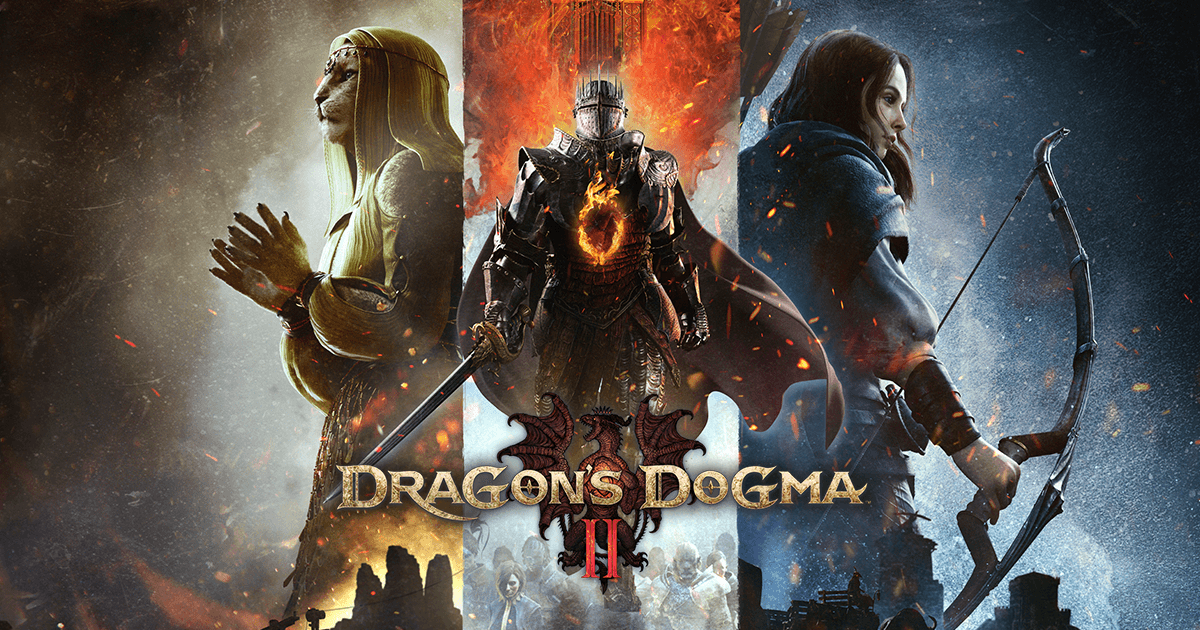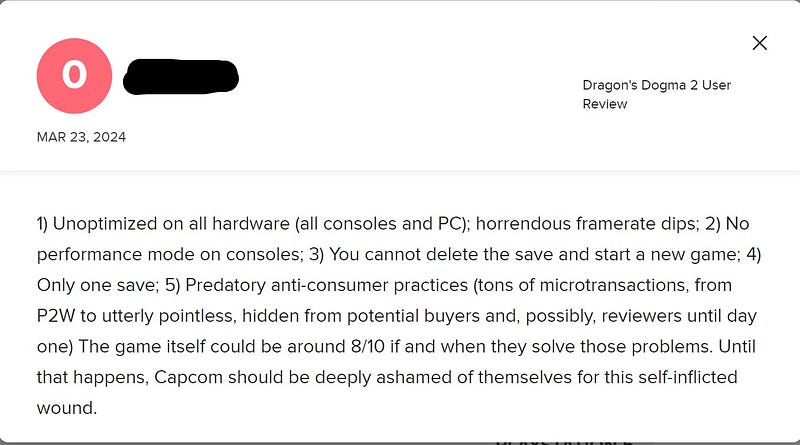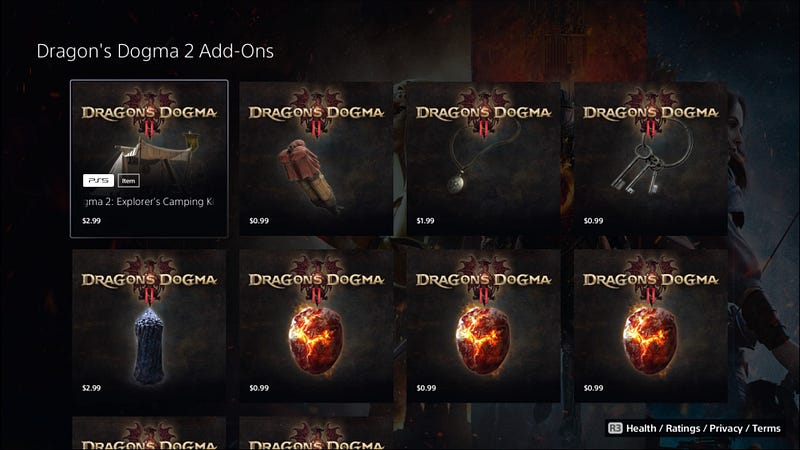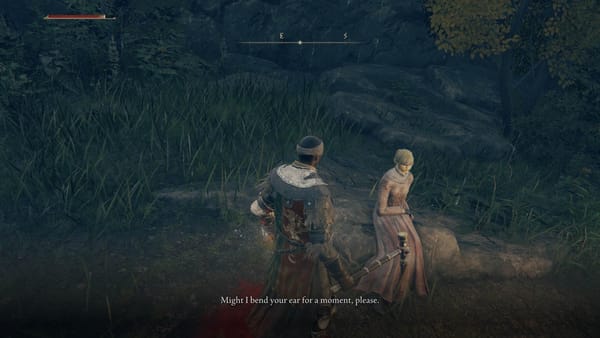The Truth Behind Dragon’s Dogma II’s Microtransactions
Since its reveal trailer in May 2023, Dragon’s Dogma II has had fans waiting in anticipation. Capcom fans rejoiced at the revival of a…

Since its reveal trailer in May 2023, Dragon’s Dogma II has had fans waiting in anticipation. Capcom fans rejoiced at the revival of a series that hadn’t seen the light of day since 2017, and fans of high fantasy worlds would continue to thrive after already getting massive releases like Baldur’s Gate 3 and Elden Ring. Fast forward to now, and public reception has been mixed. At the time that I’m writing this, IGN gave the action-RPG an 8/10, arguing that it is “more of a redo than a sequel…that bolsters the original’s strengths without addressing its weaknesses.” RPG Site gave the game a 10/10, the PS Store currently rates it at a 4.29/5, and Metacritic’s critic reviews put the game at an 86/100. However, it seems that a vocal minority of fans disagree with the critics, as Metacritic’s user ratings contradict the 86-point Metascore with a 5.3/10, Backloggd reviews put it at a 3.6/5, and the Steam store has been at a steady “Mixed Reviews.” Some of the complaints about the game can be argued. Locking the game at 30 fps is something that I’ve never had an issue with, but the implied lack of smoothness in some areas has proven to be an issue for players. Many complaints stem from the poor optimization for both PC and console. Some complaints have been about the game only having one save file and no options to start a new game or erase a saved game without going into system settings. But the most common issue that players have aired their grievances about at this point is the amount of microtransactions.

Now, I’m not arguing for the sake of microtransactions. I firmly believe that they are primarily predatory, if not able to become predatory by creating pay-to-win situations or locking content that heavily changes the experience behind it (stocking cosmetics behind a paywall is fine unless you’re Blizzard selling K-pop skins for $70). So, when I heard that Dragon’s Dogma II, a single-player game, had commodities like fast travel and redesigning your character behind microtransactions, I had to see for myself. What I came to see was practically nothing.

For $1 a piece, players can buy a Wakestone, an item that functions as an extra life. The Portcrystal that lets players fast travel is $3, reshaping a character is $2, and various Rift crystal packs range from $1-$5. Of course, this would look egregious and disgusting if you had no idea that all of these items can be found in game within the first couple of hours. Rift crystals are gained passively when other players use your main Pawn through online services but can still be earned through side quests and enemy drops. The Portcrystals can be purchased in shops, and the Wakestone Shards that make up the Wakestone can be found randomly across the world. There isn’t a single pay-to-win aspect of the Dragon’s Dogma II’s microtransactions! You can experience the entire game without dropping a single dime past the initial $70 that has (sadly) become the new standard for AAA game prices.

Microtransactions aren’t foreign to the current climate of games. They haven’t been for Capcom in a while — go check the online stores for any Monster Hunter game that’s been out recently — but I think that basing an opinion on a game solely because of the wholly avoidable and unnecessary microtransactions is disingenuous. In fact, I’d argue that there are much more pressing issues to focus on that should impact review scores.
The use of Denuvo has repeatedly been claimed to cause performance issues and lower frame rates, and that’s still the case in many player reviews. Many quality-of-life updates that were present in Dragon’s Dogma: Dark Arisen, like being able to create a new save file (but still only having one at a time) and characters having quest markers over their heads are gone. Dragon’s Dogma II feels like something that I thought AAA developers had been slowly growing past, releasing games that needed just one more patch to be at their peak for release. Maybe Capcom needed to release this game into the wild to truly see the effects of the intricate systems unfolding underneath the game’s surface, but that still isn’t an excuse. This is a game people have been waiting for for years! Dragon’s Dogma II is a full-priced game that, while a wonderful and detailed experience, has fallen victim to problems that could have been easily avoided. None of this is aided by the reactionary audience that is the internet, who so far has focused the bulk of its attention on the insignificant $3 fast travel rather than the fact that the game seems to just be missing features that would’ve made it whole. Perhaps Capcom plans to include these features later in an update patch or DLC, but in the meantime it feels like they decided to forgo some important additions to their game for the sake of hitting a release target.
Update: After this article was published, the official Dragon’s Dogma Twitter/X account made a post announcing updates for features that were addressed in this article. You can see the post here.



